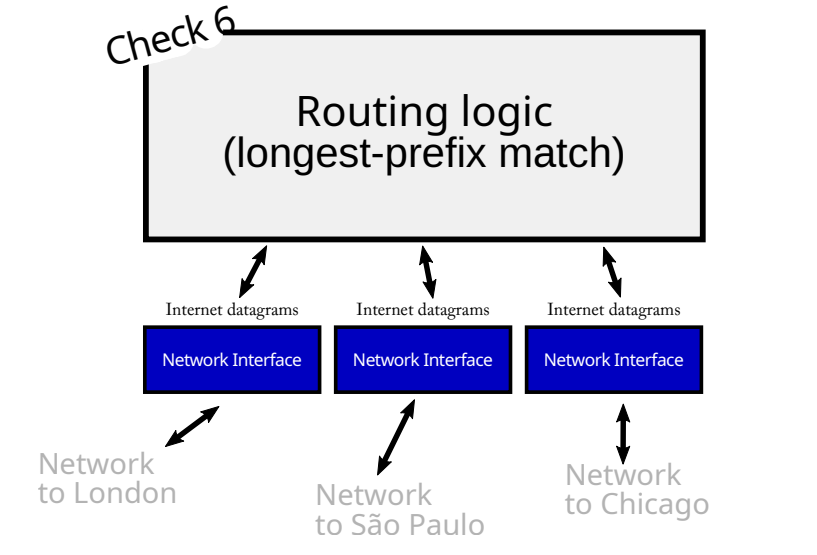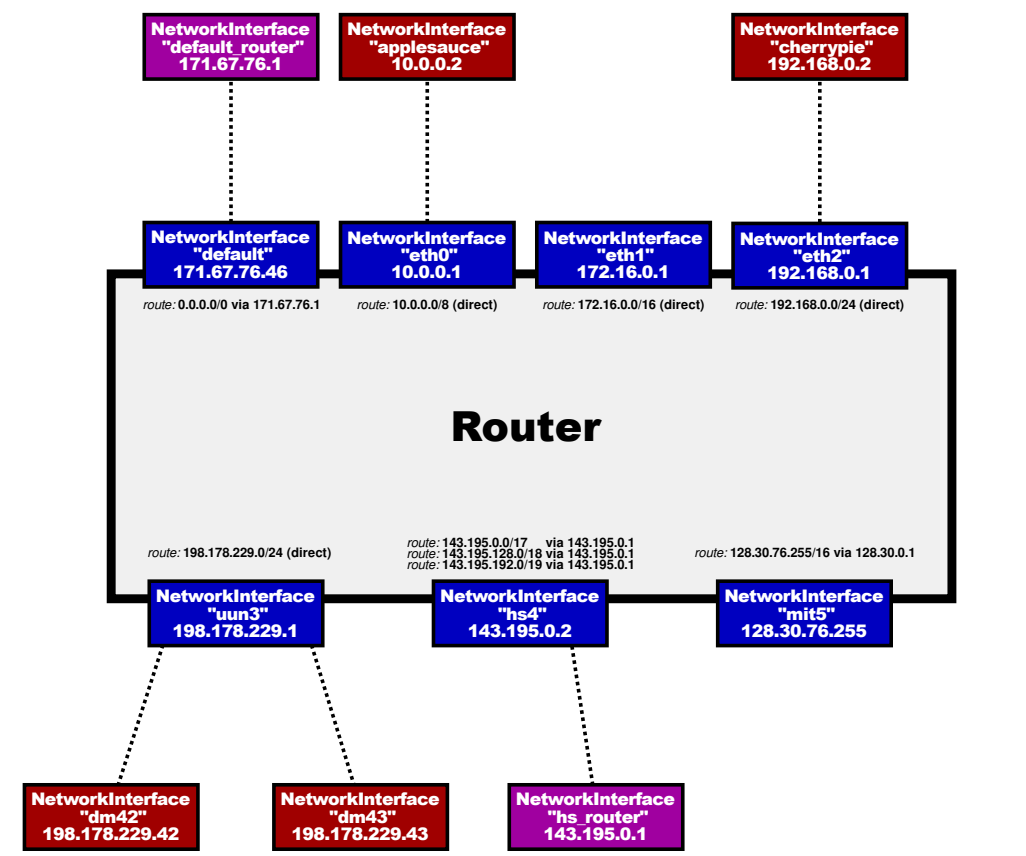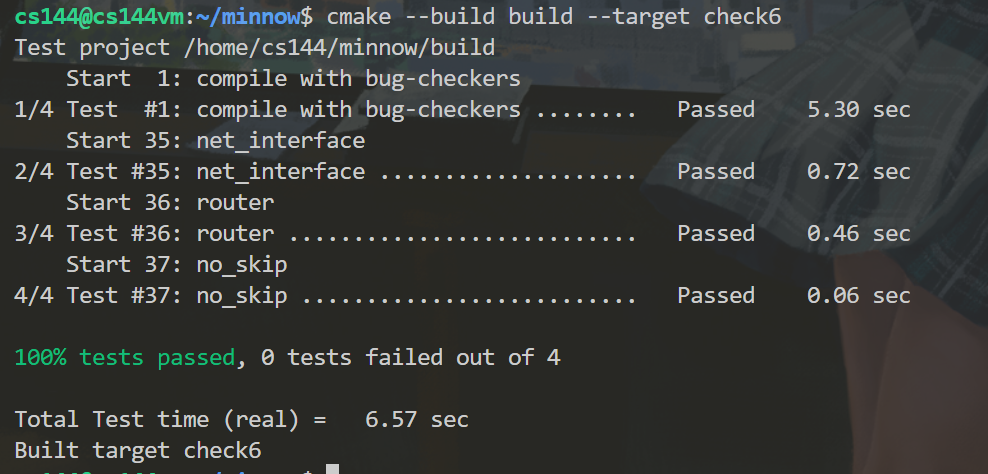CS144 Lab 6
Lab Checkpoint 6: building an IP router
注意,这篇笔记My implementation部分全程代码剧透!
Overview
In this lab, you will implement an IP router on top of your existing NetworkInterface. A router has several network interfaces, and can receive Internet datagrams on any of them. The router’s job is to forward the datagrams it gets according to the routing table: a list of rules that tells the router, for any given datagram:
-
What interface to send it out
-
The IP address of the next hop
Your job is to implement a router that can figure out these two things for any given datagram.

根据上图,一个router包含多个network interface,router根据routing table得知其收到的datagram的next hop,然后将其放到合适的outbound interface上。
注意这个lab不需要你实现Network Control Plane中生成routing table的routing algorithm(如RIP, OSPF, BGP, SDN controller),只需要实现Network Data Plane的功能:根据routing table来实现forwarding algorithm,也就是根据longest-prefix-match logic在routing table中寻找next hop和outbound interface
My implementation
我们的router需要干两件事情:
- 维护并添加routing table中的条目
- 根据longest-prefix-match,将下层Network Interface的datagrams送往合适的next hop和outbound interface
那么首先第一步,就是要确定用什么数据结构表示routing table,用来存储route prefix, prefix_length以及对应的next hop,outbound interface。lab的spec里面说我们不需要什么fancy的数据结构和算法来支持寻找longest-prefix-match的操作,O(N)的时间复杂度就够用。所以很简单,就用一个map,将<route prefix, prefix_length>作为key,<next hop, outbound interface>作为value就可以了。寻找longest-prefix-match就是遍历这个map,找到match的条目中prefix_length最长的。所以我希望这个map能按照prefix_length从大到小排序,这样从头开始遍历找到的第一个match的条目就是longest-prefix-match!
要让map按照prefix_length从大到小排序,我得自己给这个map定义一个比较函数:
1 | |
add_route负责向routing table中添加条目,注意如果next_hop为空说明datagram要去往的network是直接与当前router连接着的,与当前条目匹配的datagram的next hop就是其destination ip address。这就是为什么上面的routing table结构中next_hop可能为空,要用std::optional<>来封装。
1 | |
接下来就是实现route,负责将router在所有Network Interface上接收到的datagrams都在routing table中寻找longest-prefix-match,由合适的Network Interface将他们送到各自的next hop。
这需要我们遍历router的所有Network Interface,将等待在queue中的datagram一个个拿过来,去routing table中寻找longest-prefix-match,然后根据match结果送往合适的outbound interface(或drop)。
寻找longest-prefix-match的过程我用helper functions来完成,每扫描一个条目,用is_prefix_match判断是否match,直到找到第一个match的条目。
is_prefix_match的实现也很简单,就是比较两个32 bits数高N位是否相等的问题,用掩码轻松搞定。
1 | |
但是要注意prefix_length = 0的special case,routing table中可能会有0.0.0.0/0的条目,也就是无论datagram的destination ip address是多少都match。如果用mask = 0xffffffff << ( 32 - prefix_length )来构造掩码会造成未定义行为,因此要特殊处理,否则test会报错:

有了find_longest_prefix_match这个helper function,route就很简单了:
1 | |
这里我故意留了一个小错误,也是我自己实现的时候忽略的,导致我在下面的test fail处卡了很久:

你看出来问题出在哪了吗?我当时百思不得其解,明明router接收到的datagram还是正常的,为什么发送出去的就是bad IPv4 datagram呢?
原来我在将datagram header中的TTL减1后忘记重新计算header的checksum了!如果这样发送出去接收到datagram的host/router检查了checksum之后就会判定datagram损坏了!仅仅漏这一行代码,这个router发送出去的所有datagram都是坏了没法用的!
1 | |
Finish!
Your router will be tested in the simulated network below:

All tests in check5 pass!

Conclusion
写完这个lab后,你应该能感受到Internet分层分工设计的优雅之处。我们的router不需要关心上层的TCP,下层的Link Layer长什么样(不用关心Ethernet frame,或者link layer的ARP协议),只需要关心Network Datagrams,剩下的就交给下层的Network Interface处理就行了。我们不需要关心Network Interface是怎么从外部接收到Network Datagrams的,也不需要关心他是怎么把Network Datagrams送出到next hop的,只需要把router需要他做到的事情交给他做,并信任他能够做到就可以了。